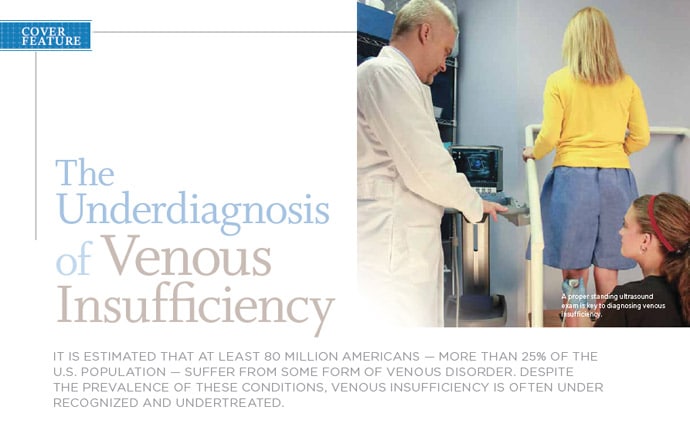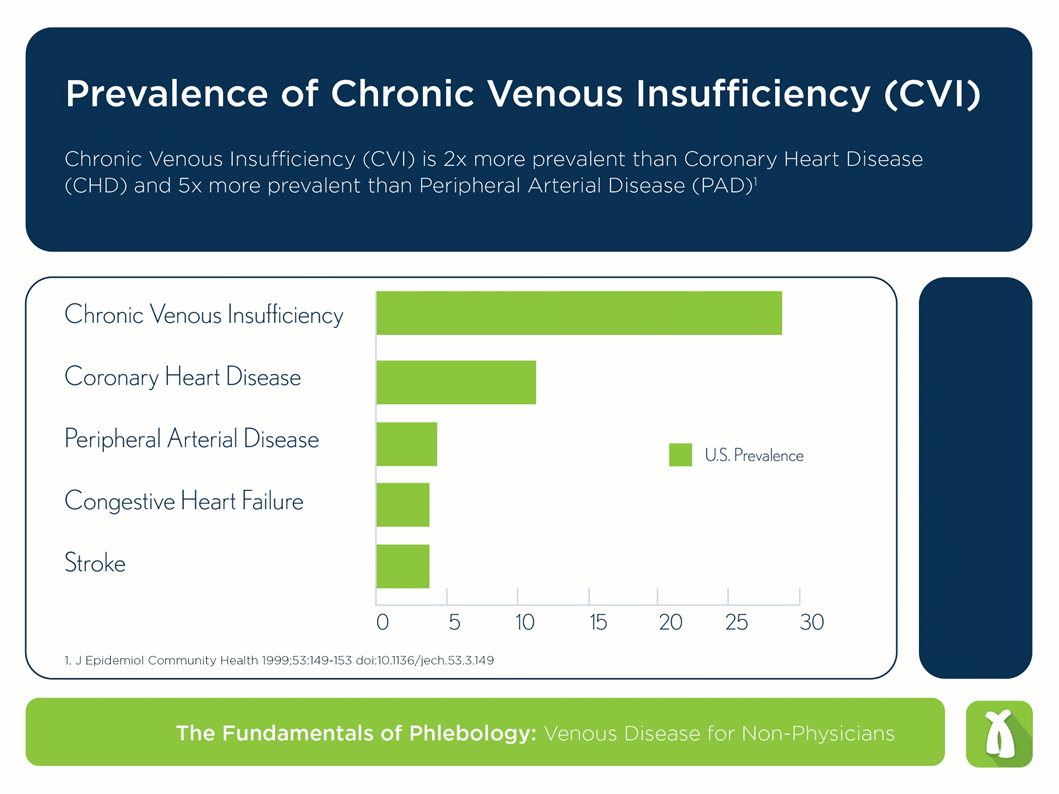
The veins within the human body play an extraordinary role when it comes to overall health. Beneath the surface of the skin and situated deep within the tissues, veins create a network of essential vessels that must consistently carry blood back and forth between the heart and the rest of the body. When veins are doing their job well, the body often functions seamlessly. When there is a problem with veins, there is suddenly a long list of things that could potentially go wrong for an individual.
Understanding Venous Insufficiency
An individual who presents with venous insufficiency is one who is experiencing a problem related to blood flow. Veins are designed to be always carrying blood back to the heart but from time to time, veins experience valve malfunctions. When this happens, blood that is intended to go once direction flows the opposite, creating a pooling effect in the veins most often situated within extremities. As veins dilate with the strain of misdirected blood, severe medical issues can follow. The development of varicose veins is closely linked to venous insufficiency and can prove to be a painful and aesthetically displeasing condition for many people. Varicose veins tend to bulge at the surface and often present in shades of blue or purple. Individuals suffering from varicose veins often experience symptoms that are painful including swelling, warmth, redness, achiness and overall fatigue.
A step beyond varicose veins is the potential for patients to develop deep vein thrombosis (DVT). In this scenario, venous insufficiency leads to the development of blood clots that have the potential to break free and cause a pulmonary embolism. The risk of heart attack and stroke is also increased for those diagnosed with DVT.

https://www.ncbi.nlm.nih.gov/pubmed/10396491
https://www.ncbi.nlm.nih.gov/pmc/articles/PMC1756838/
J Epidemiol Community Health. 1999 Mar;53(3):149-53.
Potential Causes Related to Venous Insufficiency
There are a variety of factors that are believed to be related to the development of venous insufficiency. Some physicians have noticed a link between those patients with being overweight and those that smoke regularly. Alternatively, there are links between venous insufficiency and those patients who are simply genetically inclined to develop the condition and have a family history of venous insufficiency to go along with it. Other potential causes for this condition are: pregnancy, jobs that require standing in one place for prolonged times and or a sedentary lifestyle.
Diagnosing and Treating Venous Insufficiency
While the symptoms of venous insufficiency may be visible and for many patients painful, it’s far too often that patients don’t come to a physician to be diagnosed under the assumption that issues related to veins are purely cosmetic. Because venous insufficiency is so closely linked to the potential for further medical issues, it’s important to have a doctor evaluate, diagnose and treat venous insufficiency as soon as possible.
Diagnosing venous insufficiency generally beings with a thorough exam followed up with a Doppler ultrasound to map blood flow and pinpoint any valve malfunctions or pooling areas. Once the severity of the venous insufficiency is determined, a physician can create a customized treatment plan for the patient. Mild cases of venous insufficiency may be able to be improved by having a patient regularly wear compression garments such as stockings or sleeves that work to promote overall blood flow and reduce swelling. More advanced cases may require treatment options ranging from laser ablation to sclerotherapy.
Where vein stripping was once a popular choice amongst physicians looking to treat venous insufficiencies, this painful practice is no longer the norm and today, patients have a variety of minimally invasive options to choose from. On a safety front, this also means that the use of general anesthesia has been replaced with the need for only a local anesthetic, greatly reducing recovery times and eliminating associated risks.
Insurance Considerations
It may be surprising to patients suffering from venous insufficiency that in the majority of cases, insurance providers don’t consider treatment cosmetic, but essential. Treating venous insufficiency can have an extremely positive long-term health effect for many that insurance carriers seem to recognize. Before you undergo venous insufficiency treatment of any kind, be sure to check with your insurance provider to fully understand the coverage available to you.
Treatment Cost
The cost of treating venous insufficiency is highly dependent on the severity of the case and the type of treatment that’s recommended. In some cases, multiple sessions may be required to achieve successful results which will affect the final cost associated with treatment. The team at the St. Louis Laser Vein Center is happy to help work with patients on in-clinic financing and payment plan solutions.
Schedule a Consultation Today
When it comes to vein health, Dr. Wright and his team at the St. Louis Laser Vein Center are here to provide comprehensive care to each and every patient that walks through our door. When you’re considering the many benefits of treatment, be sure to contact us to learn more about our options and services.
